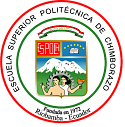Comparative analysis for level of the defectiveness in SiC power MOSFETs
DOI:
https://doi.org/10.47187/perspectivas.vol2iss1.pp33-37.2020Keywords:
Silicon Carbide, MOSFET, HysteresisAbstract
Currently, field effect transistors made of silicon carbon are an emerging technology that is entering the market for power devices, due to the higher benefits of this family of semiconductors in relation to silicon. Due to its wide bandgap, presents several peculiarities of defectiveness within its structure that directly affects the electrical characteristics of the devices, the objective of this article is to determine the level of defectiveness inside the MOS structure, using the hysteresis characterization technique In order to achieve this objective, two families of MOSFET devices manufactured in silicon carbide of different electrical characteristics were evaluated experimentally, the evaluated devices belong the same manufacturer. The level of defectiveness showed by each tested device, marks a trend according to their capability of electrical characteristics and family.
Métricas
References
D. A. Marckx, “Breakthrough in Power Electronics from SiC,” National Renewable Energy Laboratory Report, May. 25, 2005.
J. Biela, Member, M. Schweizer and S. Waffler, “SiC versus Si—Evaluation of Potentials for Performance Improvement of Inverter and DC–DC Converter Systems by SiC Power Semiconductors,” IEEE transactions on industrial electronics, vol. 58, no. 7, Jul. 2011. pp. 2872-2882.
T. Okunishi et al., “Reliability study on positive bias temperature instability in SiC MOSFETs by fast drain current measurement,” Jpn. J. Appl. Phys., vol. 56, no. 4S, 2017, Art. no. 04CR01. [4] G. Chung et al., APL 76, 1713 (2000).
G. Rescher, G. Pobegen, and T. Grasser, “Threshold voltageinstabilities of present SiC-power MOSFETs under positive bias temperature stress,” Mater. Sci. Forum, vol. 858, pp. 481–484, May 2016.
K. Puschkarsky, H. Reisinger, T. Aichinger, W. Gustin, and T. Grasser,“Threshold voltage hysteresis in SiC MOSFETs and its impact on circuit operation,” in Proc. IEEE Int. Integr. Rel. Workshop Final Rep., Oct. 2017. [7] L. A. Lipkin et al., MSF, TTP (2002), Vol. 389, p. 985.
T. Grasser et al., “The time dependent defect spectroscopy (-TDDS) for the characterization of the bias temperature instability,” in Proc. IEEE Int. Integr. Rel. Phys. Symp. (IRPS), Anaheim, CA, USA, 2010, pp. 16–25. [9] P. Jamet et al., APL 79, 323 (2001).
G. Pobegen and T. Grasser, “On the distribution of NBTI time constants on a long, temperature-accelerated time scale,” IEEE Trans. Electron Devices, vol. 60, no. 7, pp. 2148–2155, Jul. 2013. [11] H. Yano et al., APL 78, 374 (2001).
Temperature, Bias, and Operating Life, JEDEC Standard JESD22A108D, 2010.
G. Rescher, G. Pobegen, T. Aichinger, and T. Grasser, “On the subthreshold drain current sweep hysteresis of 4H-SiC nMOSFETs,” in Proc. IEEE Int. Electron Devices Meeting (IEDM), San Francisco, CA, USA, 2016, pp. 10.8.1–10.8.4. [14] T. Okayama et al., SSE 52, 164 (2008).
D. B. Habersat, R. Green, and A. J. Lelis, “Temperature-dependent threshold stability of COTS SiC MOSFETs during gate switching,” in Proc. IEEE Int. Rel. Phys. Symp. (IRPS), Monterey, CA, USA, 2017, pp. WB-4.1–WB-4.4.
G. Rescher et al., “Comprehensive evaluation of bias temperature instabilities of 4H-SiC MOSFETs using device preconditioning,” Mater. Sci. Forum, 2017.
M. Beier-Mobius, J. Lutz, Breakdown of gate oxide of SiC-MOSFETs and Si-IGBTs under high temperature and high voltage; Intelligent Motion , 2017.
G.Cosentino, E.Guevara, L.Sanchez, F. Crupi, “Threshold Voltage Instability in SiC Power MOSFETs”; International Exhibition and Conference for Power Electronics, Intelligent Motion, Renewable Energy and Energy Management; PCIM Europe 2019.
Published
How to Cite
Issue
Section
License
Copyright (c) 2020 Esteban Guevara, José Tinajero, Mauro Guevara, Mildred Cajas

This work is licensed under a Creative Commons Attribution 4.0 International License.
Copyright
The authors of the manuscripts will retain their copyright on their articles published in Pespectivas Journal. These rights allow the authors to present their manuscripts in public, prepare derivative works, reproduce them physically by printing and distribute them on their social or research networks. These rights will remain unchanged as long as the authors respect the publication and free access policy of Perspectivas Journal.
Publication Rights
Perspectivas Journal reserves all first publication rights on each of the articles that the authors have sent to its review and publication process. It implies that authors will only exercise their copyright if they state the source and origin of the publication correctly, mainly when they distribute, share, present, or use their articles' total or partial content.














